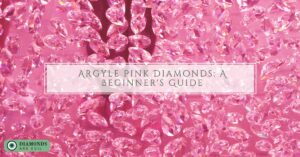Introduction
Diamonds are well known for their aesthetics and uniqueness, but more than these diamonds are used as a sign of love, commitment, and romance; this explains why it is widely used in the production of engagement rings and various ornaments. The name diamond was derived from the Greek word “Adamas,” which means “unconquerable.” The earliest diamonds were discovered in the fourth century BC in India, and they were formed 900 million years before its discovery. Large scale mining of diamonds started when it was discovered in Kimberly, South-Africa, in the 19th century.
One of the interesting facts (things) about diamonds is the number of years it takes to form in the Earth’s core. Scientists have discovered that natural diamonds were formed between 1 billion to 3.3 billion years in the Earth’s core, under extreme temperatures and pressure, which have been estimated to be 2,200 degrees Fahrenheit and 727,000 pounds, respectively. However, with technological advancement, the process of growing diamonds is now replicated in a controlled environment and with a short timeframe, and these are called lab-grown diamonds.
Natural Diamonds
Diamonds are made by carbons that are buried beneath the Earth’s surface. These carbon atoms come together under high temperature and high pressure, and they bond together to form strong, hard, and crystalline structures. These atoms of carbon are usually in close proximity, and they join together in covalent bonding. These carbons continue to grow in the Earth’s core, thereby forming crystals, and this process takes millions of years.
With the formation of diamonds in the earth core, at a depth where man’s drilling equipment cannot reach, diamonds are transported up to the Earth’s surface by fast-moving molten magma during volcanic eruptions. This magma has to be fast-moving, so it will not cool off before getting to the Earth’s surface, and the diamond eventually becomes graphite with years. Diamonds are contained in the volcanic material that is formed on the earth surfaces at the depth where it can be explored by man.
The extraction of natural diamonds from the Earth’s crust involves pipe mining, alluvial mining, and marine mining. These types of mining methods result in environmental hazards, which often have primary and secondary effects on the environment and humanity. This has therefore led to the innovation of lab-grown diamonds by scientists, and various research was conducted in this regard.
Lab-Grown Diamonds
These are diamonds that are produced in the laboratory using small diamonds as starter seeds. The two main methods of developing lab-grown diamonds are High-Temperature High Pressure (HTHP) method and Chemical Vapour Deposition (CVD) method.
The High-temperature High-Pressure method started in the 1950s, and this method replicates the condition which is necessary for the diamond to grow in the Earth’s core, in the laboratory. This method uses a starter seed placed into pure carbon at high temperature and high pressure. The chamber is heated up to 2000 Fahrenheit at which the carbon melts with the seed and therefore forms a larger diamond. The average time frame for this process is three to four weeks.
The Chemical Vapour Deposition method started in the 1980s, and the method makes use of a small piece of diamond with a hydrocarbon mixture. Typically, methane and hydrogen with a mixture ratio of one to ninety. This process involves more pressure than temperature, 27Kpa, and 900 degrees Celsius, respectively. This method basically takes two to three weeks to fully grow diamonds.
Natural and lab-grown diamonds
Technology advancements have helped to boost the diamond industry by reducing the millions of years it takes for natural diamonds to grow to less than a month. Lab-grown diamonds only needs a starter diamond seed, and a larger volume of diamonds are grown.
Lab-grown diamonds do not require so much labor and manpower like that, which is employed in the mining of natural diamonds. Also, environmental hazards that result from the mining process and its other secondary impacts on life and humanity can be avoided.
Natural diamonds and lab-grown diamonds are genuine diamonds, and none are of lower quality than the other as the two have the same physical, optical and chemical properties. Both types of diamond perform equally when graded based on the 4c’s of the diamond, which is; cut, color, clarity, and carat weight.
Therefore, it is important to note that instead of waiting for millions of years before natural diamonds grow, thousands of lab-grown diamonds would have been created instead.






